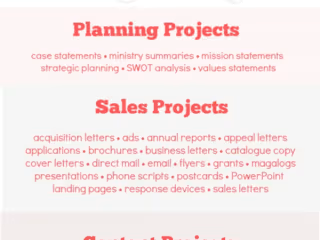Ecommerce Copywriting: 12 Tips to Boost Sales [+Examples]
Want to know how to write ecommerce copy that gets conversions?
We’ve all been there.
Writing copy for ecommerce is both art and science.
Here, you’ll find 12 ecommerce copywriting tips from successful stores to help you hone your own texts. These tips worked wonders for them, so there’s every chance they could work for you.
Click to go to sections:
What is ecommerce copywriting?
Ecommerce copywriting involves writing promotional copy for online stores. It’s a fine balance between engaging customers, extolling the product benefits and ranking high on Google. Ecommerce copywriting examples include product descriptions, landing page copy, and sales promotions. Really though, it’s anything on your website.
Here’s one example: this product description from Allbirds demonstrates how the product’s benefits resolve a pain point, while also being engaging and concise.
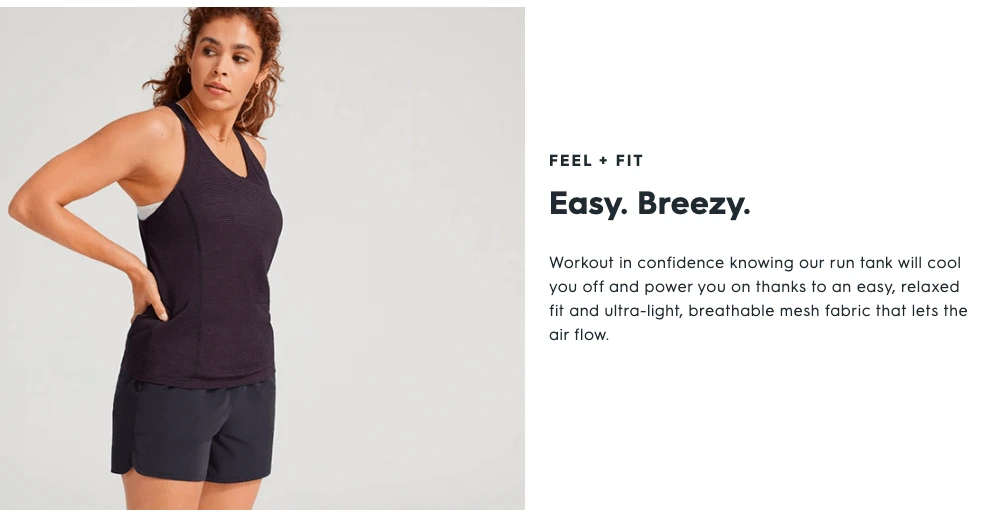
Benefits of great copywriting for ecommerce
Brand differentiation. Great ecommerce copywriting can make your brand look unique among others.
Good first impression. Copy can make a good first impression by evoking emotions, addressing concerns, connecting with the customer, etc.
Increased sales and conversions. Great copywriting for ecommerce demonstrates how the product is the solution to the customer’s problem. Words can address specific points and help the customer overcome any hesitancy about making the purchase.
Stronger customer relationships. Ecommerce writing is essential in creating a bond with customers, gaining and sustaining their trust, and establishing a long-term relationship.
Ecommerce copywriting tips
Follow these tips to make your ecommerce writing a driver of sales and conversions:
Study your audience
Write engaging headlines
Find the right tone of voice
Tell your story
Focus on positive impacts
Create urgency
Make copy scannable
Add visuals to enhance content
Write in the active voice
Use sensory words
Add keywords for SEO
1. Study your audience
Before we can start writing any ecommerce copy we need to answer an important question: who are we writing the copy for?
Knowing target readers’ needs and goals is a step towards crafting copy that resonates with them. So, audience research should always be your first step.
Great ways to research audiences include:
Using your company’s market research and analyzing site traffic data
Conducting online surveys, polls, and interviews
Once you’ve done the research, you’ll have plenty of ideas to describe your product in your “customers’ language”.
Let's see an example if your research and assumptions are correct.
Say, your company is selling backpacks.
If we peruse Reddit for chats about backpacks, we’ll find a whole bunch. These are potential customers talking about the very product you sell. Are your assumptions correct? In doing this research you’ll find useful phrases and words to use in the copy.
WP Standard is one of the top Shopify stores and a good example of a brand that uses customer-inspired language. In this product description below, we see phrases like “everyday hustle” and “will stay with you for years”—that’s communicating with target customers in a way they’ll find familiar.

So, go ahead and do your audience research before writing any ecommerce copy. Trust me: once you know who you’re writing for, writing will become much easier.
Studying competitors’ ecommerce copywriting is another good idea.
These Sales Promotions Examples will show how others are marketing their sales. And these Signup form examples are useful to see how others get emails.
2. Write engaging headlines
Think about the last time you landed on a website. What did you first see – was it a catchy headline? Headlines are vital for creating a positive and engaging first impression. A customer may choose to buy something based on the headline alone.
That’s why we need catchy and engaging headlines everywhere – in emails, homepages, product pages, ads, etc.
To create attractive headlines, you should do three things:
Be clear
Resonate with your target customers
Show some brand personality
Let’s start with clarity.
Ecommerce headlines need to get to the point so customers know that they’re in the right place. Being too “smart” here can backfire, as complicated headlines can obscure the meaning.
This headline from Warby Parker makes the value crystal clear.

Next, resonating, by which we mean connecting with customers on a deeper level.
If you understand your target customers well, your headlines will be more likely to strike a chord with them. Studying your customers’ needs, goals, and issues is critical.
Let’s see an example.
Partake Foods conveys a specific benefit for customers with this headline about allergen-free ingredients.
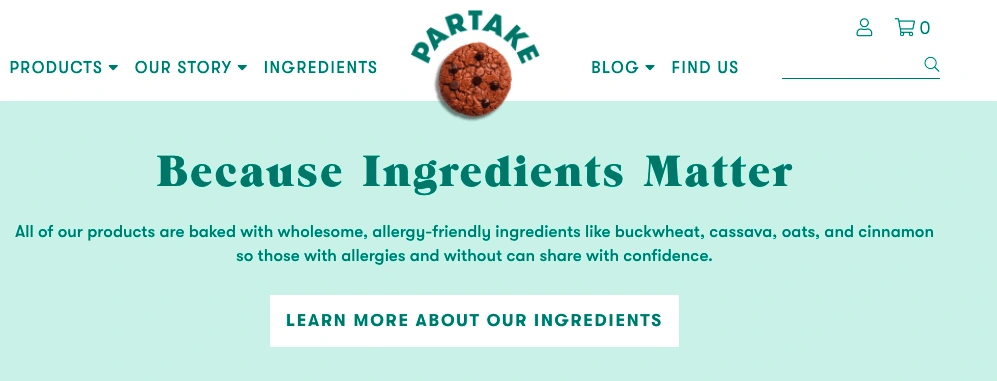
Getting allergen-free products is the reason why customers buy Partake Foods’ products. This headline (and the text below) let them know they’re in the right place.
Now, imagine that the headline was generic, e.g. “Try our tasty products.” To visitors, Partake Foods would look like any other company selling cookies.
That’s the difference great ecommerce copywriting can make.
And the last headline tip: add some brand personality.
Through ecommerce copywriting, you can express the uniqueness of your brand and make it more memorable.
Take TOMS as an example.
With copy like the example below, the brand quickly establishes itself as caring, friendly and warm.

With any brand personality, it’s essential to keep the style and tone consistent across all ecommerce copy (product descriptions, product pages, home pages, etc).
In one marketing campaign, TOMS gave away 296,000+ shoes for children in need. See more examples of brands demonstrating their values: Ethical marketing examples.
3. Find the right tone of voice
In ecommerce copywriting, tone of voice communicates brand personality.
The tone can be playful, elegant, casual, formal, etc. But whatever you choose, it needs to represent your brand in an authentic way. It’s important because 86% of customers think authenticity matters when choosing brands.
That’s why businesses develop unique tones of voice to communicate with customers.
Let’s see some examples.
This product description uses a playful and humorous tone. And it’s brilliant, as the comparison of bamboo toilet paper and a unicorn’s mane will definitely get attention.
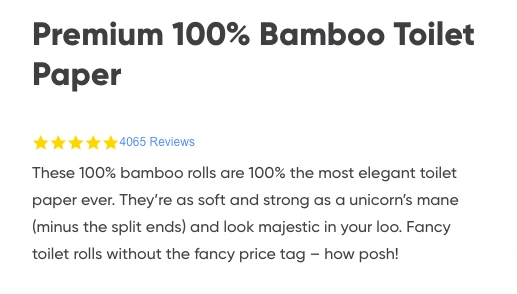
Here’s another example:
Uber has cultivated a strong brand personality that emphasizes audience empowerment and professionalism. The homepage copy below showcases the encouraging, considerate, and straightforward tone that helps shape Uber’s image.

So, what tone of voice is right for your business?
Find out using these steps:
Study your target customers. In particular, their demographics (age, location, income, etc.) and psychographics (interests, personality, lifestyle, etc.) will help understand what communication style they might prefer.
Align tone with your product. Product and price will impact your tone; for example, a luxury car manufacturer would have a very different tone to a manufacturer of toilet paper.
Imagine your business is a person. How would you envision that person would speak to others? That’s exactly how you should write.
Taking these steps will get you closer to defining the right tone of voice for your brand.
Highway Robery uses popups to collect emails from visitors. This strategy can convert up to 5% of store visitors.
4. Tell your story
Storytelling is a great technique for connecting with your customers.
Take Madsen Cycles. Here’s my summary of the brand’s story:
The Madsen family visited relatives in Denmark and they were impressed by the country’s bike culture. They devised a plan to bring some of that culture back to America – and ultimately designed a unique type of family-friendly bike.
An overseas trip, an invention, a fierce entrepreneurial spirit – the story has it all. And Madsen Cycles proudly shares it with customers.
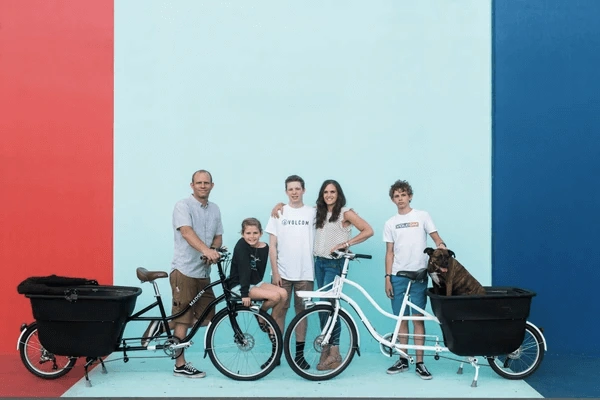
You can also inject some storytelling into product descriptions.
The idea here is straightforward –
Tell a story about how the product will change customers’ lives.
Brands do it in different ways. Chubbies, for example, promotes a pair of casual shorts with a little story that appeals to customers’ imagination.
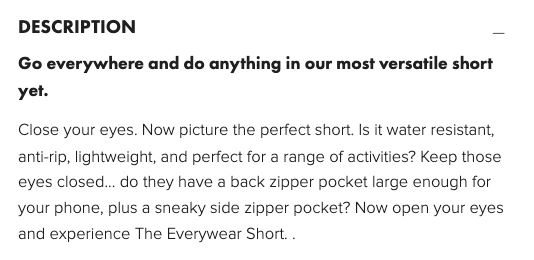
These stories build rapport with customers. They evoke positive emotions and that’s always helpful when you want to connect with a customer. What’s your brand story? Think about some interesting ways you can share it and weave that throughout your copy.
More ecommerce copywriting examples and expert tips:
Ecommerce case studies (+examples of successful campaigns)
5. Focus on positive impacts
Positive language can get people excited and convince them to engage.
This technique is simple: describe how your brand will benefit customers – but don’t push it too far and start sounding all “salesy.” It’s a fine balance but you’ll know it when you see it. The easiest way to nail this technique? Use the classic “focus on benefits, not features” ecommerce copywriting trick.
This product description from Thesus is a good example. It’s bursting with positivity, and we don’t feel like the brand is forcing us into a sale.

To write more positively:
Start with an action verb. E.g. try “Slip them on-and-off easily with an inside zip” instead of “An inside zip makes it easy to slip on-and-off.”
Answer the “So What?” question. Write “This bundle will get you on the way to better skin” instead of “Buy the bundle.”
Write in the second person. Pull your customers into your content by using “you,” “yours,” “yourself,” and “yourselves.”
And the bottom line –
Customers want to focus on the positive impacts of your product, not dwell on the problems that they’re facing without it. That’s why using positive language will greatly improve your ecommerce copywriting.
6. Create urgency
In ecommerce copywriting, urgency is a proven technique to get potential customers to take immediate action. Our job is to let them know that acting as soon as possible is in their best interests.
We have many ways to convey urgency:
Limited stock levels
Mystery and flash sales
Limited edition products
Time limit to get a special price
Free delivery for special conditions
Let’s see a couple of examples.
Boughs promotes a weekly deal with limited-quantity products with this message. It conveys urgency well and is concise and on point. Well done.
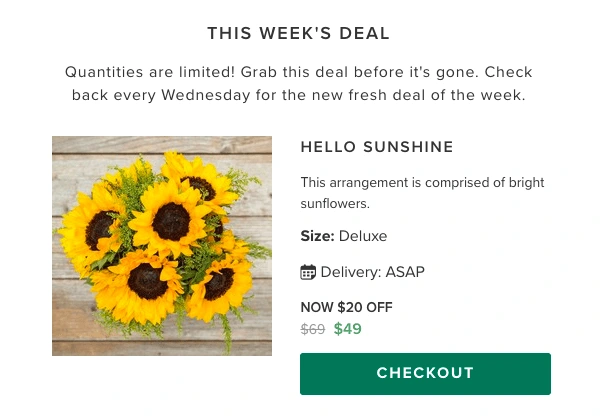
Next example: a flash sale.
This ecommerce copy comes from an email Redbubble used to announce a quick sale.
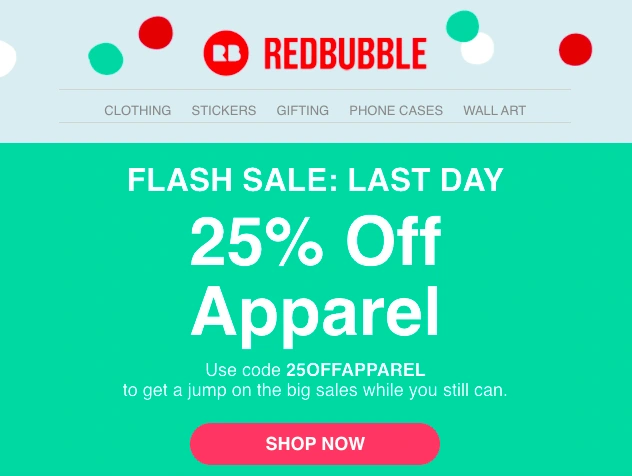
One thing to note when conveying urgency: focus on the most important details your shoppers need to convert. As the examples above have shown, those details might include timelines, discounts, codes, conditions, and, of course, some encouragement to engage.
Related:
7. Make copy scannable
Are you making your ecommerce copy easy to read?
Folks are busy these days, so they want only the essential info, quickly. So fight the temptation to write a long and detailed copy – very few people will read every line.
With practice, you’ll learn how to be concise while still packing in the info you need to convert visitors to customers.
This product description from Dollar Shave Club uses bullet lists to communicate many benefits in a reader-friendly and scannable way.
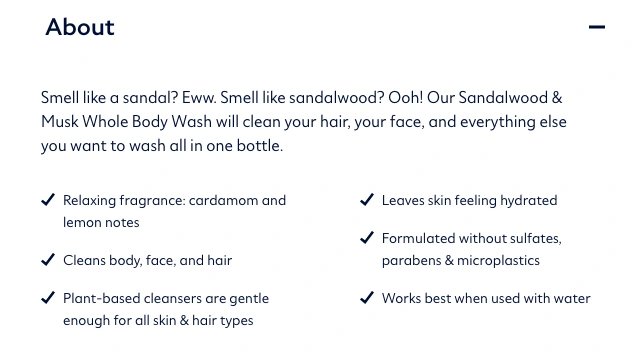
Besides bullet lists, consider using:
Different font sizes
Headings and subheadings
Short paragraphs (no more than three lines)
Adding visuals is another way to break up your text, making it easily digestible. Let’s cover this tip next.
8. Add visuals to enhance content
You can greatly increase the effectiveness of your copy by having some awesome visuals accompany the text. For example, you can try to describe how a product works, but images might do the job better.
Let’s see an example.
Queen Garnet describes how to use its products but it’s the image here that will get the visitor’s attention.
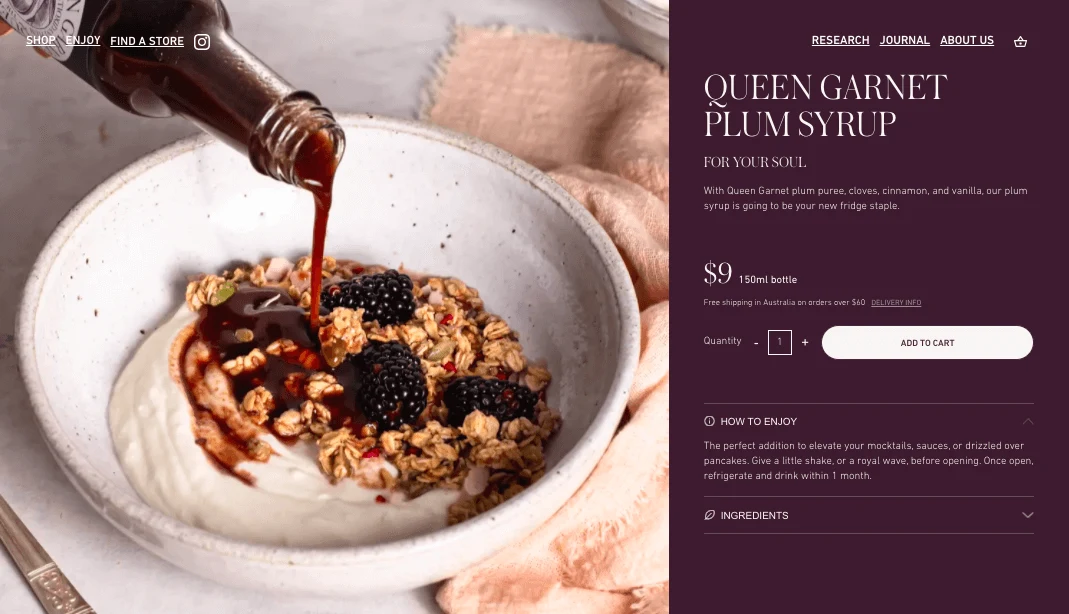
Visuals can also enhance storytelling across your website. Describing your brand history, for example, would be much easier if you added images and/or videos to the mix.
Yellow Tail Wines boosts its story with photos of the owners, the family winery, and the vineyards. In under a minute, we learn how the family of Italian immigrants became one of Australia’s top wine success stories. The combination of engaging text and images is evocative.
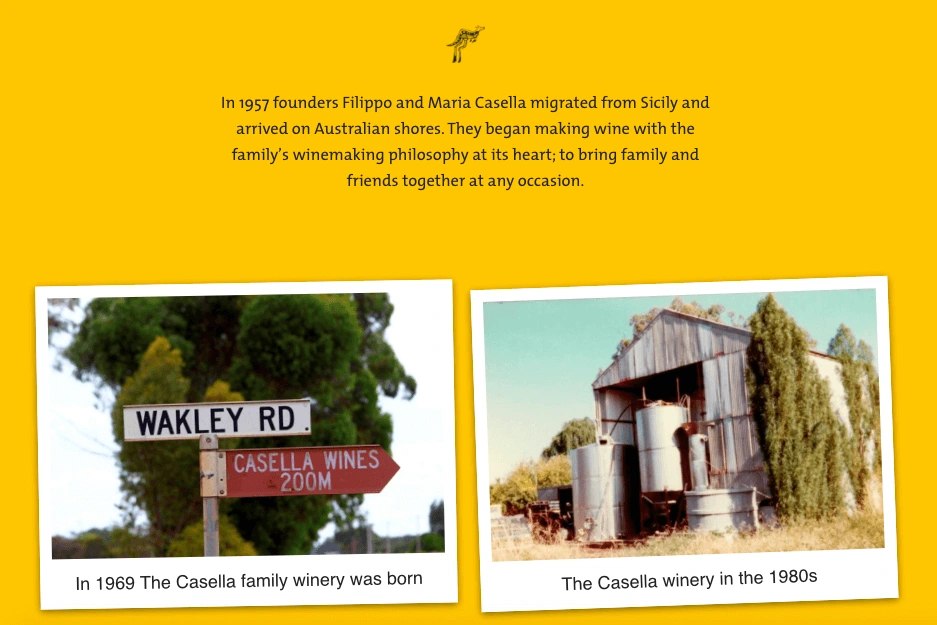
Examples of ecommerce website designs
Queen Garnet is also one of the best ecommerce websites in terms of design.
Find out why: Ecommerce website design examples
9. Write in the active voice
If ecommerce copywriting was the posture… then the passive voice would be slouching.
The passive voice introduces an “academic feel,” which can make the text boring and hard to comprehend, and effectively prepares the reader to sleep.
That’s why businesses use active voice in ecommerce copywriting.
Let me give you a quick example.
Imagine if Nike chose a passive voice-based slogan instead of “Just do it.”
This would be the result. Not quite so inspiring, is it?

Your brand should also use active voice in ecommerce copywriting.
Check out Grammarly and Hemingway Editor (both free) if you need help detecting and removing passive voice from your text. They’re accurate and easy to use.
10. Overcome objections and hesitation
Most customers who visit your site aren’t ready to buy. They want to explore many options before committing – and that’s fine.
Your ecommerce copy can convince them to stop searching.
How?
With risk aversion.
It’s a strategy for showing people that the risk of taking a deal is minimal. Buying and selling apps, for example, use free returns and shipping to reduce hesitations of shoppers. Ecommerce stores do the same.
You can use risk aversion in your ecommerce copy by including:
Customer reviews
Product characteristics
Money-back guarantee
Secure payment badge
Free shipping notifications
HelloFresh is a brand with a great risk aversion strategy in copywriting.
Right on the homepage, customers can see answers to popular questions about their meal subscription services.
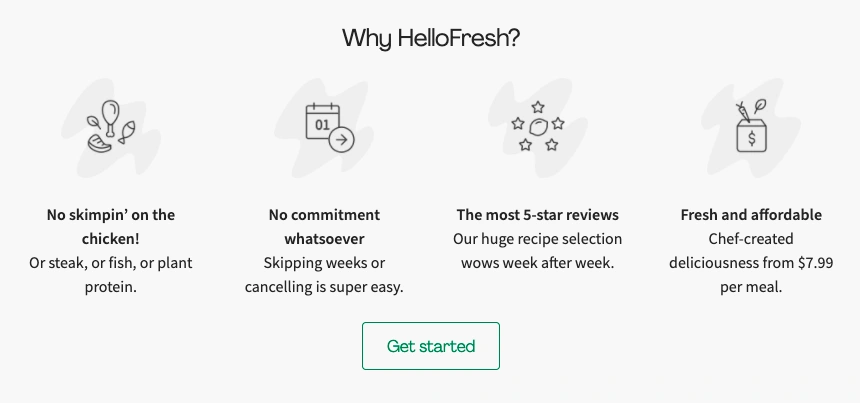
And it gets better. If customers still have some doubts, HelloFresh gives them social proof in the form of customer reviews. Up to 79% of customers trust online reviews as much as personal recommendations.
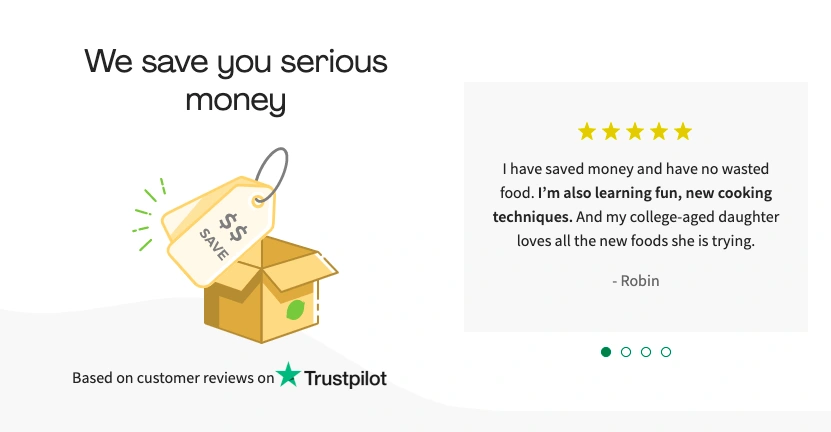
HelloFresh continues by ensuring customers that they can cancel their subscription any time – no commitment is required.
They do it with this text, packed with trust-promoting words.
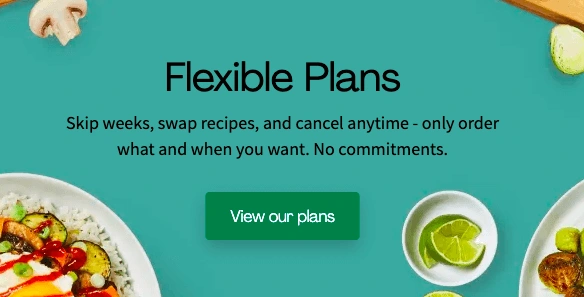
And the last piece of the puzzle: Call-to-action, or CTA, buttons.
Deliver that final push to convert with these CTA writing tips:
Use power words that indicate low risk, e.g. “Try for free” “No-risk trial,” or “No credit card needed”
Add benefits for converting, e.g. “Get professional advice,” “Explore our products,” or “Customize my plan”
Personalize the action by adding personal pronouns, e.g. “Sign me up,” “Yes, take me to the sale, ” or “Add to my bag”
11. Use sensory words
Sensory words can really spice up your ecommerce content.
Done well, ecommerce copy with sensory words can captivate visitors and let them experience brands in a deeper way.
Sensory language makes us “see, taste, feel, or hear” writing. For example, instead of bland words like “good,” “nice,” or “bad,” food brands can try “sweet,” “zesty,” “creamy,” “crumbly,” or “foamy.”
This is exactly what Matt’s Cookies is doing.
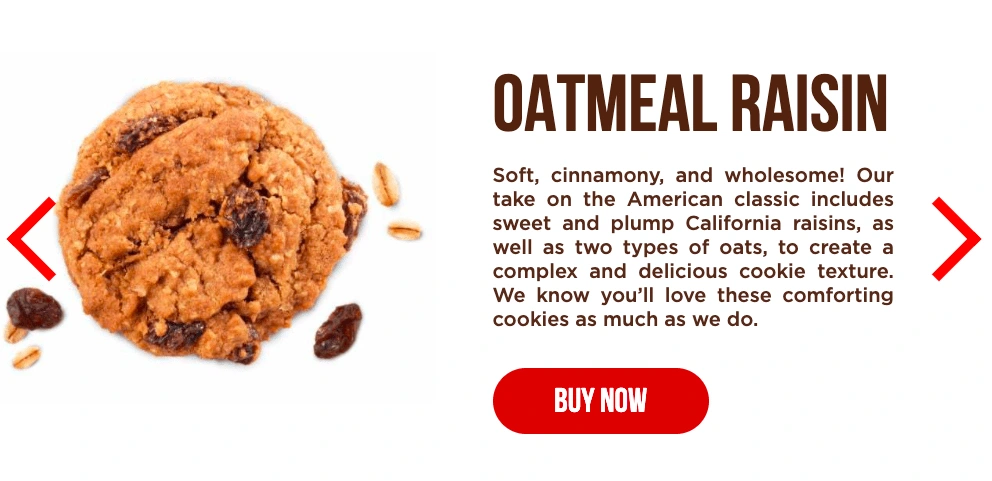
Davines, a beauty brand, uses many sensory words to describe its products to refer to smell, touch, and sight. This product description for shampoo is a nice example.
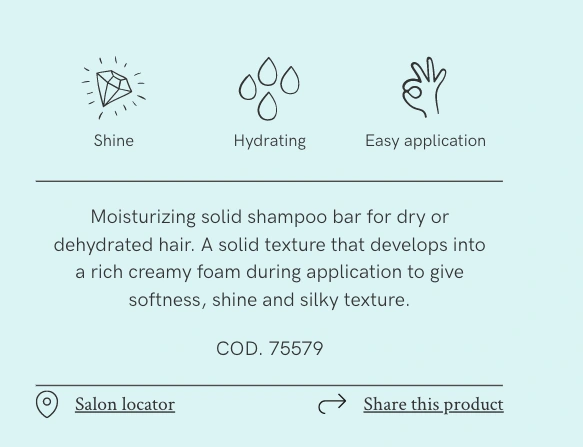
Get started with sensory language in your ecommerce copywriting by replacing some descriptive words with sensory alternative. Then, add some more sensory words to describe some of your product’s characteristics.
12. Add keywords
Keywords are the last remaining part of the ecommerce copywriting puzzle.
Before you start writing, do keyword research. This means using Google or dedicated tools like Ahrefs to find queries to include in your copy.
One crucial thing, though –
Place keywords to your ecommerce copy organically.
Stuffing (the practice of overusing keywords) makes the copy sound unnatural and robotic. Besides, Google now penalizes sites for doing this.
Ecommerce copywriting: summary
Whether you’re a newbie copywriter, veteran marketer, or a master copywriter who needs a refresher, I hope these tips were useful. Ecommerce copywriting is not high art, so you can drive great results even with very little experience.
Follow our copywriting for ecommerce tips and create fantastic copy. If you’d like to put your skills to the test, here’s an idea – try website popups to generate leads.
Here’s how to do it:
Write great popup copy (try some of the 12 tips you’ve just learned)
Active the popup on your store and capture visitors’ emails
Good luck!
Pawel is the Head of Growth at Wisepops and an expert in lead generation, popups, and onsite marketing.
With over a decade of experience in digital marketing, he has both build marketing teams from scratch and led strategic business growth projects.
Pawel has worked with countless online businesses on marketing strategies and is now sharing his knowledge on the Wisepops blog.
Like this project
Posted Sep 30, 2023
Struggling with ecommerce copywriting? These 12 ecommerce copywriting tips will help you create appealing copy for your online business.




